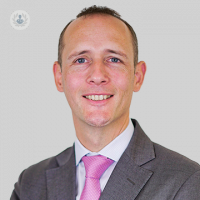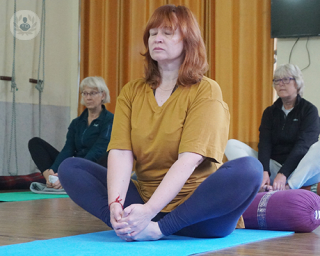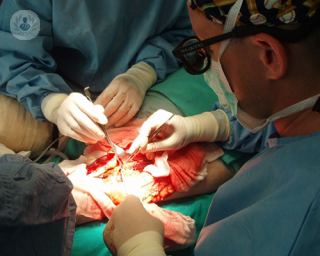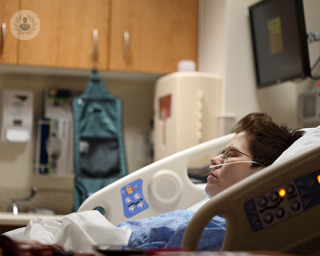DIEP breast reconstruction
Mr Kieran Power - Plastic surgery
Created on: 10-06-2017
Updated on: 09-20-2023
Edited by: Aoife Maguire
What is DIEP flap reconstruction?
Women who have a mastectomy performed as part of breast cancer treatment may later decide to have reconstructive surgery to rebuild the breast which was removed. DIEP (deep inferior epigastric perforator) flap reconstruction is a type of reconstructive breast surgery which uses tissue taken from the patient’s abdomen.

Why is it done?
DIEP flap reconstruction is done in order to reconstruct the breast which was removed during mastectomy. While there are many reconstructive procedures available nowadays, with different surgical techniques producing different results, the DIEP flap reconstruction procedure can offer a natural-looking and feeling breast, as it uses the patient’s own tissue.
Implants can sometimes produce an uneven result, as of course the implanted breast may look slightly different to the natural breast, and implants can also distort and be uncomfortable years after the initial surgery. DIEP flap reconstruction rarely requires significant retouching, and the result is both natural and ‘softer’ looking, as the reconstruction should age naturally along with the patient, and change depending on your weight.
DIEP reconstruction can also be used to improve the appearance of the breast and relieve symptoms of a tight or distorted implant.
The result of DIEP flap surgery is generally lifelong, although occasionally a second smaller operation is needed after the initial one, to adjust the reconstruction, or to remake the nipple.
What does it involve?
The procedure is performed under general anaesthetic, using microsurgery to disconnect some of the tissue and blood vessels from the lower abdominal area. Once the ‘flap’ of tissue has been removed, it can be connected to a new blood supply in the chest. The operation itself is complex and can take between 6 to 8 hours. As it is performed under general anaesthetic, you should expect to be in the hospital for several days.
How do you prepare for DIEP flap surgery?
Your surgeon will assess if you are eligible for DIEP flap surgery, as those who are underweight or significantly overweight may not be considered for the procedure. If you have enough spare tissue around the abdomen, you may be able to have DIEP flap surgery. In your consultations with your surgeon, they will discuss the options available to you, and if you decide to choose DIEP flap surgery, you will have a CT angiogram performed.
A CT angiogram checks the blood vessels in the abdomen and can tell the surgeon if any type of injury to the abdominal muscle is likely to happen during surgery. Other tests may be ordered to check you are suitable for surgery.
Aftercare
As the procedure is relatively complex, you will have to stay in hospital for a few days after surgery. A scar, similar to that of an abdominoplasty, sits on the abdominal area, but this generally fades well over time. Scarring on the breast depends on the surgery performed. If the procedure is performed at the same time as the initial mastectomy, scarring can be reduced. If performed at a later date, the scar may be a little more visible, but it generally fades well over time too.
After surgery, you will need to avoid strenuous activity for around 6 weeks and some discomfort may be felt in the abdomen for this time. You can expect to be back to normal after about three months.
Alternatives to this treatment
Various forms of reconstructive surgery can be performed after a mastectomy, including implant surgery, where an implant filled with saline, silicone gel, or a mixture of the two is used to reconstruct the breast. Tissue can also be taken from other areas of the body in similar ‘flap’ procedures, such as from the thigh or back. Your plastic surgeon will explain your options and you can decide on the best course of action after exploring them together.















